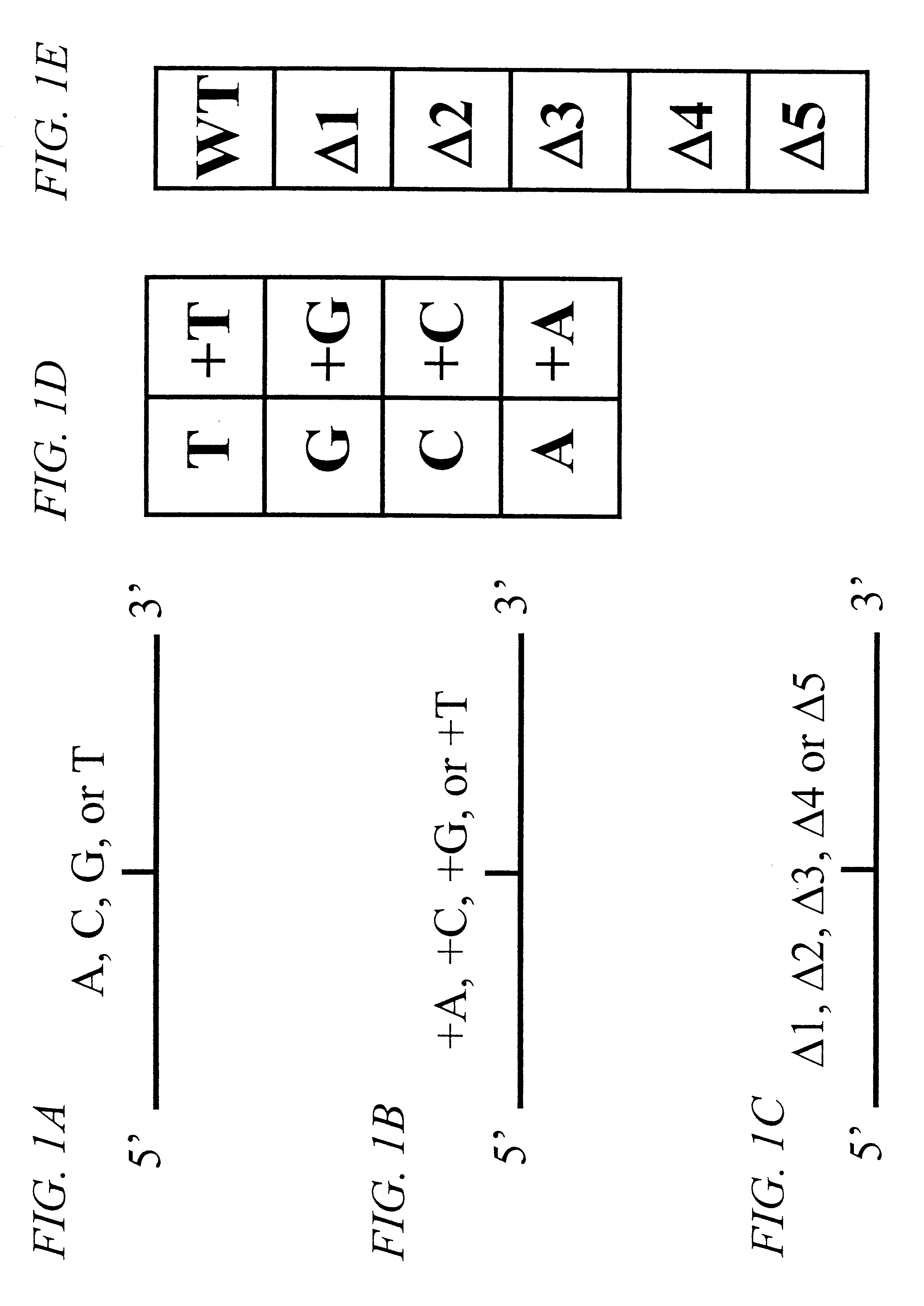Probe-based analysis of heterozygous mutations using two-color labelling
a technology of color labelling and probes, applied in the field of probe-based analysis of heterozygous mutations using twocolor labelling, can solve the problems of affecting amplification, little, if any, amplification product is generated,
- Summary
- Abstract
- Description
- Claims
- Application Information
AI Technical Summary
Benefits of technology
Problems solved by technology
Method used
Image
Examples
Embodiment Construction
Germline mutations in BRCA1 are present in 50-60% of kindreds with breast and ovarian cancer, and may account for approximately 2-5% of all breast cancer cases in the general population (Hall et al., Science 250, 1684-1689 (1990), Narod et al., Lancet 338, 82-83 (1991), Easton et al. Am. J. Hum. Genet. 52, 678-701 (1993), Rowell et al., Am. J. Hum. Genet. 55, 861-865 (1994)). Heterozygous carriers are markedly predisposed to early onset breast and ovarian cancer, and are also at moderately increased risk of developing colon and prostate cancer (Ford et al., Lancet 343, 692-695 (1994)). The protein coding region of BRCA1 contains 5,592-bp in 22 coding exons spread over 100-kb of genomic DNA (Miki et al., Science 266, 66-71 (1994)). Over 111 unique BRCA1 mutations distributed throughout the gene have been described in the literature (Shattuck-Eidens et al., Am. Med. Assoc. 273, 535-541 (1995) and (Breast Cancer Information Core Database located on the World Wide Web at http: / / www.nchg...
PUM
| Property | Measurement | Unit |
|---|---|---|
| size | aaaaa | aaaaa |
| temperature | aaaaa | aaaaa |
| temperature | aaaaa | aaaaa |
Abstract
Description
Claims
Application Information
 Login to View More
Login to View More - R&D
- Intellectual Property
- Life Sciences
- Materials
- Tech Scout
- Unparalleled Data Quality
- Higher Quality Content
- 60% Fewer Hallucinations
Browse by: Latest US Patents, China's latest patents, Technical Efficacy Thesaurus, Application Domain, Technology Topic, Popular Technical Reports.
© 2025 PatSnap. All rights reserved.Legal|Privacy policy|Modern Slavery Act Transparency Statement|Sitemap|About US| Contact US: help@patsnap.com

